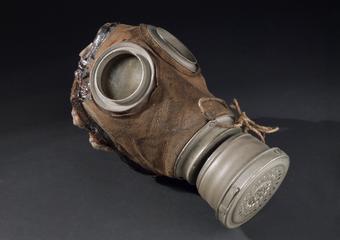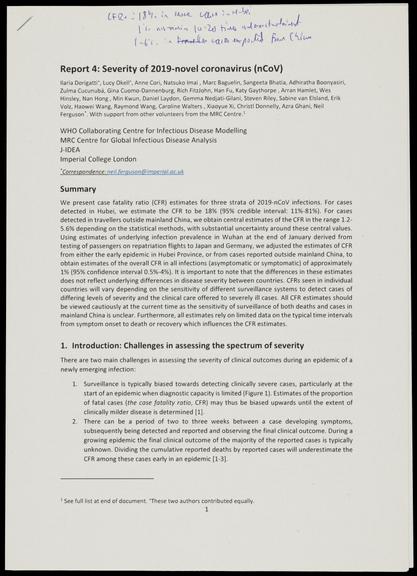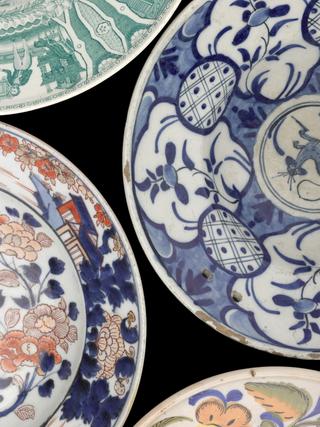
Imperial College London report titled ‘Report 4 – Severity of 2019 novel coronavirus (nCoV)’
- Made:
- 2020 in United Kingdom
- maker:
- Imperial College London

Copy of an Imperial College London report titled ‘Report 4 – Severity of 2019 novel coronavirus (nCoV)’ from 10 February 2020, used by Dr Tom Irving, joint Head of Scientific Pandemic Influenza Group on Modelling (SPI-M) Secretariat and Scientific COVID-19 Modelling
Modelling has been a hugely important part of scientific research into COVID-19. It has helped us to understand how the virus has spread and to predict what may happen in the future. As one of the groups who feed into the advice the Scientific Advisory Group for Emergencies (SAGE) give the government, SPI-M has been central to this research. The members of SPI-M come from universities across the country and Public Health England. To help stop SPI-M just being academic, the secretariat, made up of Civil Service scientists, provided a link between the group and decisions makers. One high profile example of the work of SPI-M is the R-number which was calculated by SPI-M until July 2021. The R or reproduction number is a measure of how many other people any one infectious person would also infect and is one example of the type of modelling that has been done during the pandemic. SPI-M’s work was not done in a vacuum. It was informed by scientific research done by institutions around the UK and internationally.
Details
- Category:
- Public Health & Hygiene
- Object Number:
- 2022-101
- Materials:
- paper (fibre product)
- Measurements:
-
overall: 297 mm x 210 mm
- type:
- document




